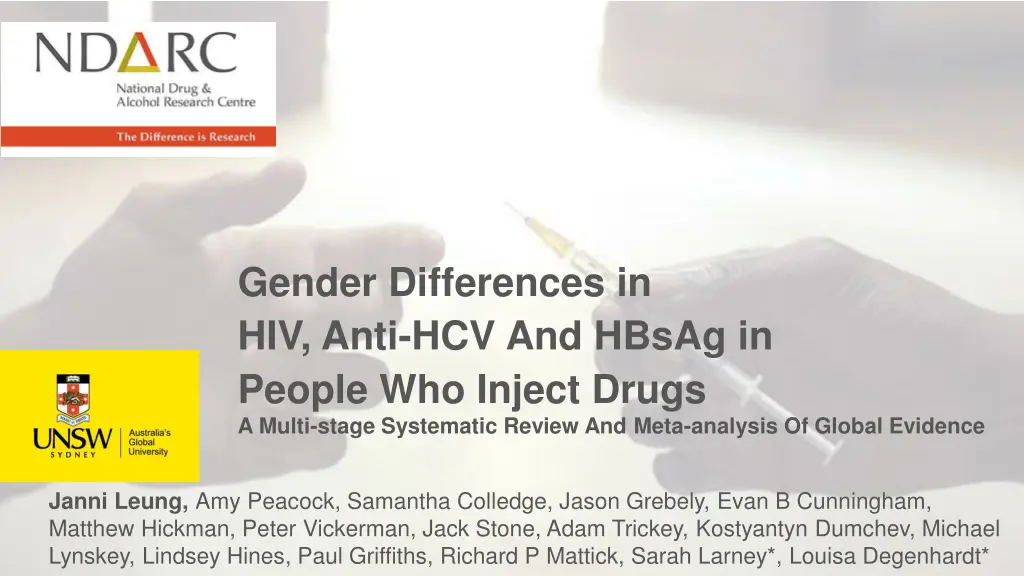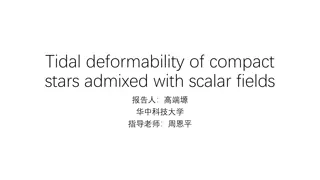
Gender Differences in HIV and Other Infections Among People Who Inject Drugs
Explore the global evidence on gender differences in HIV, Anti-HCV, and HBsAg prevalence among individuals who inject drugs through a comprehensive multi-stage systematic review and meta-analysis. The research findings shed light on the relative risks of HIV transmission between women and men and highlight the importance of targeted interventions in addressing these disparities.
Download Presentation

Please find below an Image/Link to download the presentation.
The content on the website is provided AS IS for your information and personal use only. It may not be sold, licensed, or shared on other websites without obtaining consent from the author. If you encounter any issues during the download, it is possible that the publisher has removed the file from their server.
You are allowed to download the files provided on this website for personal or commercial use, subject to the condition that they are used lawfully. All files are the property of their respective owners.
The content on the website is provided AS IS for your information and personal use only. It may not be sold, licensed, or shared on other websites without obtaining consent from the author.
E N D
Presentation Transcript
Gender Differences in HIV, Anti-HCV And HBsAg in People Who Inject Drugs A Multi-stage Systematic Review And Meta-analysis Of Global Evidence Janni Leung, Amy Peacock, Samantha Colledge, Jason Grebely, Evan B Cunningham, Matthew Hickman, Peter Vickerman, Jack Stone, Adam Trickey, Kostyantyn Dumchev, Michael Lynskey, Lindsey Hines, Paul Griffiths, Richard P Mattick, Sarah Larney*, Louisa Degenhardt*
Methods Global multi-staged systematic review and meta-analysis Screened >55 thousand studies Included >1000 studies 104 studies reported data by gender 2
Gender differences in HIV among PWID Relative Risks (women vs men) 3





